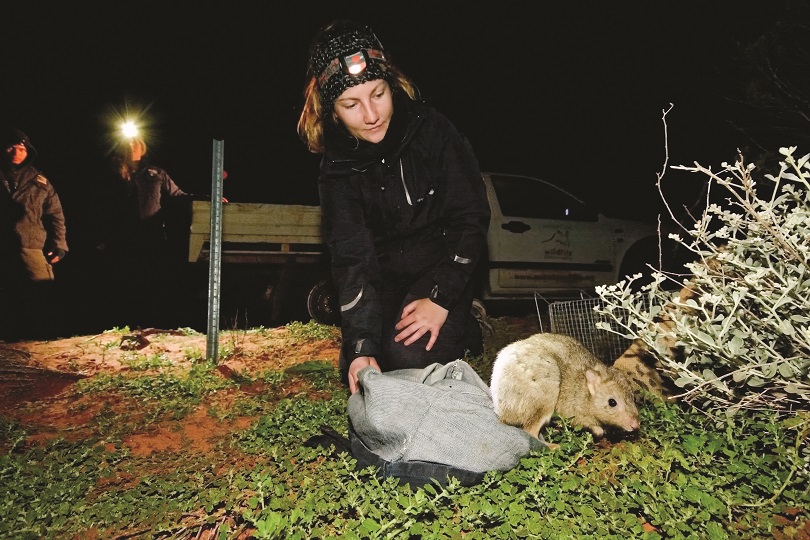By Dr Liana Joseph, National Science Manager, Dr Elisa Bayraktarov, University of Queensland – Threatened Species Hub Researcher, Dr Fay Lewis, Science Coordinator, and Dr John Kanowski, Chief Science Officer
Ecological monitoring is a critical tool in the conservation toolbox. Collecting field data is essential if conservation agencies are to know anything about the status of species, the processes that are threatening them, and the effectiveness of management actions.
AWC is committed to collecting field data as part of our EcoHealth Monitoring Program. Each year, AWC’s science team spends months in the field conducting surveys across our sanctuaries and partnership areas.
Collecting the data is a gargantuan effort: in 2019 alone AWC’s team of field ecologists and volunteers undertook more than 220,000 trap nights across the continent in order to collect valuable data. This is the largest field science program in Australia and possibly the world.
The information we gather enables us to report on the status of biodiversity and threat indicators for each sanctuary in our annual EcoHealth scorecards and reports.
We also share these data with other conservation and science bodies as we recognise that utilising the type of ecological data AWC collects is a key component for conserving Australian wildlife.
Australia’s Threatened Species Index
The Threatened Species Index for Mammals is a new national tool to assist policy makers, conservation managers and the public to understand how some of the population trends across Australia’s threatened species are changing over time. This composite index pulls together information on populations of all threatened mammals for which there are ecological data available.
The index enables coherent and transparent reporting on relative changes in threatened mammals at national, state and regional levels, and across different management settings (e.g., feral predator-free areas versus areas under other kinds of management, or areas with no management interventions at all).
The first iteration of this new index covers the period between 1995 and 2016 and captures high-quality time series (monitoring) data on 57 threatened and near-threatened Australian mammals from a total of almost 10,000 surveys and from over 1,000 locations across the country. For the first time in Australia, an index has been developed that can provide rigorous, measurable trends across Australia’s threatened species.
AWC’s contribution
AWC is the major contributor of data to the Threatened Species Index for Mammals, adding long-term survey data for 10 threatened mammals to the 2019 index. This year, we will increase our data contribution to include more species and more sanctuaries.
The index was developed by the Threatened Species Recovery Hub of the Australian Government’s National Environmental Science Program. AWC has been a collaborating partner in the development of this index since its inception in 2016. We have also contributed our data to the 2018 Threatened Species Index for Birds.
Through AWC’s commitment to evidence-based conservation, we are a national leader in not just the collection of biodiversity survey data but ensuring it forms an integral component of, and gets embedded in, important assessments such as these.
 © Wayne Lawler/AWC
© Wayne Lawler/AWC
Data confirms success of AWC model
The results are out and the index shows that while threatened mammals in Australia are generally not doing well, AWC’s model for threatened mammal conservation is working:
This is further evidence that, where AWC establishes feral predator-free fenced areas, we are making a major contribution to the conservation of Australia’s threatened mammals.